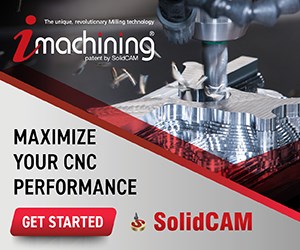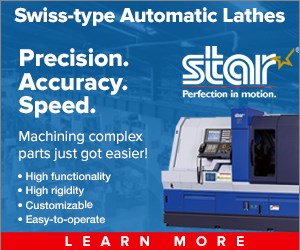When and When Not to Use Guide Bushings
In the article “Shop Opts for Choice in Swiss Machines,” a Lancaster, Ohio, shop has taken advantage of this choice. The shop’s staff discusses how the choice is made as to which parts it applies to the guide-bushed machine and which parts it runs “bushless.”

The work zone of a Swiss-type machine.
It is generally agreed that a defining feature of Swiss-type machining is presence of a guide bushing. For more than a century, the sliding headstock Z axis fed its barstock through this close-coupled orifice, allowing long, slender parts to be successfully machined without deflection.
As the advantages of Swiss-type machining have proliferated into many applications that fall inside the traditional L to D ratios that Swiss was designed to machine, builders have begun to offer a choice between using a guide bushing and not using one. Since many shops turn parts with L to D ratios that don’t need the deflection avoidance support of a guide bushing, users have the option of turning without one while eliminating the need to adjust the bushing during setup.
In the article “Shop Opts for Choice in Swiss Machines,” a Lancaster, Ohio, shop has taken advantage of this choice. The shop’s staff discusses how the choice is made as to which parts it applies to the guide-bushed machine and which parts it runs “bushless.” Click here to read about it.













